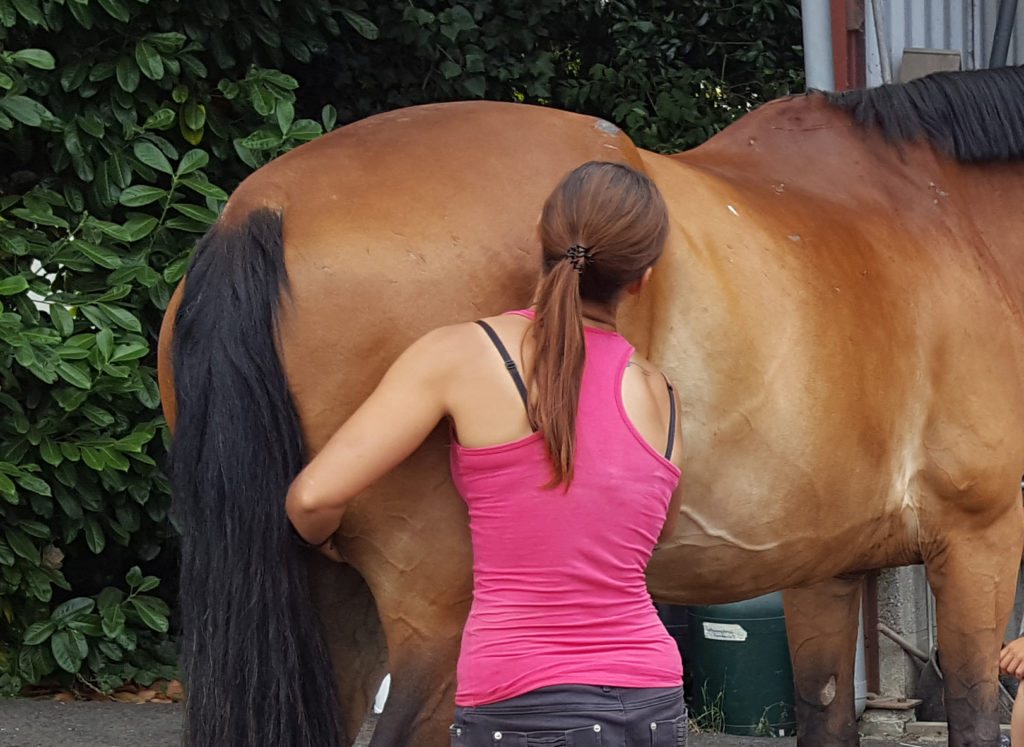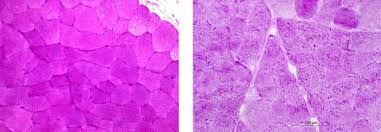Most of us don’t really think twice about how big an impact a seemingly simple procedure such as castration can have on the horse’s body. However, gelding scars can sometimes cause significant trouble for the horse.
UNDERSTANDING HOW GELDING SCARS FORM
Castration is obviously an invasive procedure, as tissue is cut open and the testes are removed. When you make an incision into the tissue, it triggers a healing process. In this process the body produces scar tissue, which can branch out from its origin and stick to tissues nearby. What can sometimes happen with castration is that the remnants of the spermatic cord and the cremaster muscle (which attaches underneath the 17th and 18th rib), can sometimes scar down to the skin or to the tissues on the outside of the abdominal wall or the inguinal ring. This can cause significant discomfort to the horse. In humans, cremaster muscle pain is considered to be absolutely debilitating. Not surprisingly then, scar tissue from castration can have a huge negative impact on the horse’s performance.
POSSIBLE INDICATORS OF PROBLEMS
If there is suspicion that the horse has trouble because of scar tissue from castration, the veterinarian can block that region and see if the horse improves. The biggest problem with these horses in the more mild cases is sometimes you have a lameness and sometimes it’s just that they can’t collect well, they may be slow movers and they are struggling with transitions up and down. They have trouble any time they really have to use their hind end, because it pulls on the connection between the cremaster muscle to the inguinal region to the back of the ribcage. The symptoms they exhibit can be very broad and they are symptoms that can also be typical of other issues. So diagnosis can be tricky. When the horse has gone through a complete vet check-up and nothing shows up on any of the tests, gelding scars might be something worth looking into. Sometimes you can get a good sense of whether or not there is an issue there if you palpate the area. If you pull gently down on the scrotum tissue, you can feel the skin moving up – this is the cremaster muscle contracting in response to pain and pulling the skin up.

Above Left: Gelding scars can cause a lot of trouble, so the sheath area should always be checked for adhesions during the bodywork session.
Above Right: Horses with fascial restrictions caused by gelding scars can have trouble properly using their hind legs, which makes it difficult for them to more correctly under the rider.
THE REHABILITATION PROCESS
If the horse improves when the area is blocked, there’s a good chance his discomfort is coming from scar tissue resulting from the castration procedure. In that case we have to lay the horse down under general anaesthesia, carefully dissect the area and find the scar tissue. Most of the time the scar tissue is just a set of strings going everywhere – it’s not like everything is simply adhered to one side. So during the surgery we cut away the adhesions to make the horse more comfortable. The rehabilitation process after this procedure is very important. It is essential that the horse is brought back to work very gradually, otherwise there is a chance that they might injure themselves. I have seen cases where horses would get suspensory injuries after the surgery, because the horse has now started to use his legs in a way he hadn’t until now and that overburdened the tissues. You really have to take a longer time to bring these horses back. The tissues in the lower limb of the affected leg will not be strong enough to do anything so you have to condition them slowly.
It’s hard to say anything concrete about prevention of these types of issues. Doing the castration procedure with the horse lying down in general anaesthesia does reduce the risk of scar tissue forming, but this type of castration is more expensive and there can be a risk for other types of complications. It is important for owners of geldings to be aware that this type of issue can be a very big problem.
IF YOU LIKED THIS POST, YOU MAY ALSO BE INTERESTED IN THE COURSE AND VIDEO BELOW:
Equine Healing and Rehabilitation of Tendon and Ligament Injuries – A Basic Introduction (Course)
Recognizing Subtle Lameness – Part 1 of a 4-Part Series (Video)
Tips from our Bodyworker (Members’ videos)







